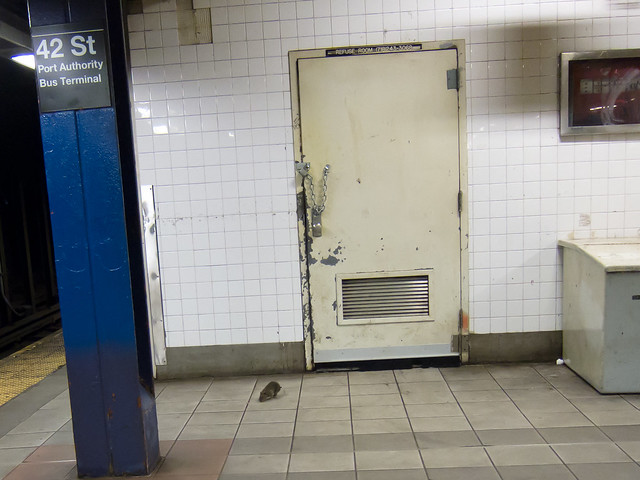In a sense, the MTA’s East Side Access project has gotten a pass from just about everyone. It’s a worthwhile project, but it was originally supposed to be in revenue service by late 2012. It’s nearly a decade over schedule and billions of dollars over budget, but few people seem to care. The media has barely covered it; the public doesn’t care. Unlike the Second Ave. Subway, it doesn’t disrupt lives, but it just goes on and on and on.
By and large, the MTA has been forthcoming with budget information on East Side Access. We know that the project will cost more than $8 billion, and we know that this figure is well beyond initial estimates. We know it’s been delayed and delayed again, and we know the agency is going to have to spend money on new rolling stock to meet demand. In all senses, managing the budget for this project has been a disaster.
Enter Thomas DiNapoli. The New York State Comptroller has the power to do any number of audits on the MTA with any sorts of conclusions, but I’ve often been frustrated by his results. He re-reports numbers that already available in MTA materials without offering guidance on controlling costs. This time around, DiNapoli has discovered that East Side Access is — gasp — over budget and late. Shocking news, I know.
“Time and again, the MTA has come up short on the goal to deliver the East Side Access project on schedule and within budget,” DiNapoli said in a press release. “While this project is an important addition to the regional mass transit system serving New York City and Long Island, taxpayers will have to bear the brunt of these unanticipated costs. There must be lessons learned at the MTA from this experience as they move forward with their capital program.”
Here are some of DiNapoli’s stunning conclusions:
The MTA’s current cost estimate for East Side Access is $8.25 billion, but that figure grows to $8.76 billion when the cost of additional passenger railcars needed to meet service demand is factored in.
The MTA has acknowledged that its initial cost estimates and schedules (which were released in 1999) were based on conceptual plans with virtually no engineering work behind them.By the time design work had advanced in 2006, the estimated cost had grown to $6.3 billion and the completion date had been pushed back four years to December 2013.
Since 2006, the cost has grown by $2.4 billion, or 38 percent, and the completion date has been pushed back another six years. A range of factors, including overly aggressive schedules, the number of large concurrent infrastructure projects, a contractor that performed poor quality work and unforeseen construction challenges increased cost and contributed to delays.
The MTA estimates that there is an 80 percent probability that the actual cost of East Side Access may be at or below its current estimate, and that service could begin up to one year earlier than currently forecast. Conversely, there is a 20 percent probability of additional costs or delays…
Debt service on bonds issued by the MTA to fund the cost of East Side Access is estimated to exceed $300 million in 2019 when the project enters service. This represents nearly 11 percent of the debt service for the MTA’s entire capital program in 2019. Debt service is reflected in the operating budget and is funded with fares, tolls and tax revenues.
A rezoning of the area around Grand Central Terminal to permit higher density office buildings proposed by Mayor Bloomberg, in combination with the completion of East Side Access in 2019, is expected to increase overcrowding on subway platforms and surrounding passageways.
None of these bullet points were conclusions DiNapoli reached through his own analysis, and they were all available in MTA board books released to the public last May, if not earlier. DiNapoli is, in other words, telling us something we already know: The East Side Access project has turned into a boondoggle. Contractors are reaping the benefits, and we the taxpayers are getting worked over on a daily basis.
So how can the MTA control costs in the future? What does the New York State comptroller offer as to lessons for the future? Well, he offers up a big fat nothing. His ultimate bullet point concerning rezoning could be culled from recent newspaper headlines and has very little to do with the costs or completion of the East Side Access project.
I would love to see DiNapoli’s office do more. We all know there are problems, inefficiencies and massive budget overruns, but tell us why. Tell us how to avoid it for future problems, and add to the dialogue. Regurgitating public records is simply an additional waste of taxpayer dollars albeit from the Comptroller’s Office instead of the MTA.













 (Overnights)
(Overnights)




 (42nd Street Shuttle) (Overnights)
(42nd Street Shuttle) (Overnights)